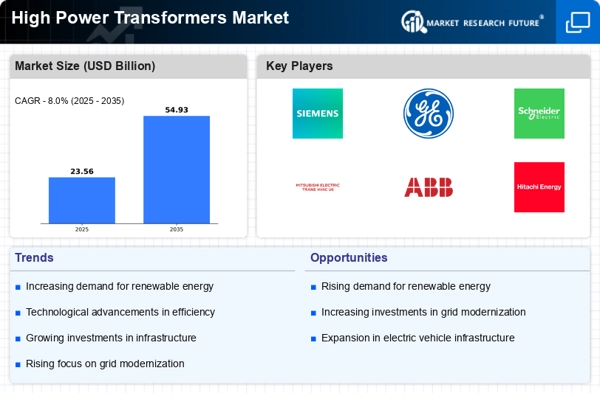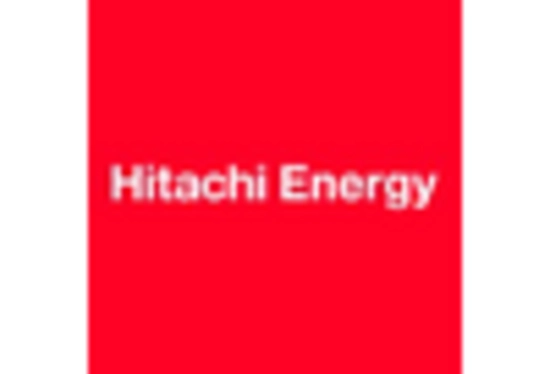Rising Demand for Renewable Energy
The increasing emphasis on renewable energy sources, such as wind and solar, is driving the High Power Transformers Market. As countries strive to meet energy transition goals, the integration of renewable energy into existing grids necessitates the use of high power transformers. These transformers are essential for stepping up voltage levels for efficient transmission over long distances. According to recent data, the renewable energy sector is projected to grow at a compound annual growth rate of over 8% in the coming years, further propelling the demand for high power transformers. This trend indicates a shift towards cleaner energy solutions, which in turn enhances the market for high power transformers, as they play a crucial role in facilitating this transition.
Infrastructure Development Projects
Infrastructure development projects, particularly in emerging economies, are significantly influencing the High Power Transformers Market. Governments are investing heavily in upgrading and expanding their electrical grids to support economic growth and urbanization. For instance, the construction of new power plants and substations requires high power transformers to ensure reliable electricity distribution. Recent reports suggest that infrastructure spending in various regions is expected to reach trillions of dollars over the next decade, creating a robust demand for high power transformers. This surge in infrastructure projects not only enhances the reliability of power supply but also stimulates the market for high power transformers, as they are integral to modernizing electrical systems.
Regulatory Support for Energy Efficiency
Regulatory support for energy efficiency initiatives is a key driver of the High Power Transformers Market. Governments worldwide are implementing stringent regulations aimed at reducing energy consumption and greenhouse gas emissions. These regulations often mandate the use of high-efficiency transformers in new installations and upgrades. For instance, energy efficiency standards set by regulatory bodies can significantly influence purchasing decisions in the market. As a result, manufacturers are compelled to innovate and produce transformers that meet these standards, thereby expanding the market. The alignment of regulatory frameworks with energy efficiency goals indicates a promising outlook for the high power transformers market, as compliance becomes increasingly critical for industry stakeholders.
Increased Investment in Smart Grid Technologies
The increased investment in smart grid technologies is transforming the High Power Transformers Market. Smart grids enhance the efficiency and reliability of electricity distribution, necessitating the integration of advanced transformers capable of handling variable loads and renewable energy inputs. The High Power Transformers Market is projected to grow substantially, with investments expected to reach hundreds of billions of dollars in the next few years. This growth is likely to drive demand for high power transformers that can support the complex requirements of smart grid systems. As utilities and governments prioritize modernization efforts, the high power transformers market is poised for expansion, reflecting the critical role these transformers play in the future of energy distribution.
Technological Innovations in Transformer Design
Technological innovations in transformer design are reshaping the High Power Transformers Market. Advances in materials and engineering techniques have led to the development of more efficient and compact transformers. These innovations not only improve performance but also reduce energy losses during transmission. For example, the introduction of amorphous steel in transformer cores has been shown to enhance efficiency by up to 30%. As energy efficiency becomes a priority for utilities and industries alike, the demand for these advanced transformers is likely to increase. This trend suggests that the High Power Transformers Market will continue to evolve, driven by the need for more sustainable and efficient energy solutions.


















Leave a Comment